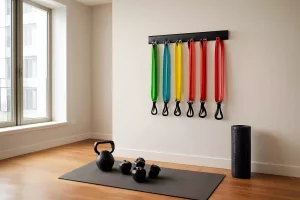When tackling any home renovation project—whether replacing flooring, refinishing cabinets, or cutting drywall—debris and dust quickly accumulate. Owning the best wet dry vacuum for home renovation ensures your workspace stays clean, safe, and efficient. In this guide, we’ll explore why a wet-dry vacuum is indispensable, break down essential features to look for, reveal five top models, and deliver expert tips for safe operation and maintenance.
Why You Need a Wet-Dry Vacuum for Home Renovation Projects
Home improvements, from removing old grout to patching plaster, generate fine dust, larger debris, and occasional water spills. A standard household vacuum often clogs or overheats when tackling these materials. A wet-dry vacuum, also known as a shop vac, is designed with a powerful motor, robust filtration, and a water-resistant tank to handle both dry debris and liquid messes.
Contractors rely on wet-dry vacuums for post-cut cleanup after using a sliding compound miter saw, collecting sawdust and wood chips in seconds. During tile removal or grout cleaning, these vacuums capture both dust and slurry, preventing damage to flooring and minimizing airborne particles. By choosing the right model, you avoid frequent canister replacements, reduce clogging headaches, and save time on cleanup, letting you focus on the next renovation step.
Key Features to Consider When Choosing a Wet-Dry Vacuum
Not all wet-dry vacuums are created equal. Understanding core features helps you invest in a model that meets renovation demands without overspending in other areas.
Capacity and Power
The tank capacity, typically ranging from 2 to over 14 gallons, dictates how often you must stop to empty debris. For small drywall or cabinet refinishing jobs, a 4–6 gallon model offers portability without frequent emptying. Larger projects—garage floor resurfacing or basement waterproofing—benefit from 10–14 gallon capacity. Horsepower (HP) and airflow (measured in CFM) determine suction strength. Look for a vacuum with at least 3.0 HP or 90 CFM for rigorous renovation tasks. Balancing capacity and power ensures you won’t lug an oversized unit or struggle with underperforming suction.
Filtration System
Dry renovation debris often contains fine dust, which can clog filters or escape back into the air. HEPA-rated filters trap 99.97% of particles down to 0.3 microns, protecting your lungs and keeping dust from resettling. Standard cloth or foam filters may suffice for occasional wood chips and liquid spills, but invest in a HEPA option if you’re cutting concrete, sanding plaster, or working on drywall.
Hose, Attachments, and Accessories
Length and diameter of the hose influence reach and debris capacity. A 2.5–3 inch diameter hose handles larger chunks, while a longer hose (10–15 ft) provides flexibility for big spaces. Common attachments include crevice nozzles for corners, wet nozzles for spills, extension wands for high areas, and brush tools for light-duty cleaning. Some models integrate onboard accessory storage, making it easy to switch tools during a project.
Mobility and Storage
Renovation sites vary from tight bathrooms to open living rooms. Wheeled vacuums with multi-directional casters navigate obstacles easily. Consider weight—lightweight models under 20 pounds travel up and down stairs without strain. Collapsible or detachable hose storage and cord wrap systems keep everything compact. If your workshop includes a DIY rolling tool cart, choose a vacuum that nests neatly alongside your power tools.
Top 5 Wet-Dry Vacuums for Home Renovation Projects
1. Shop-Vac 5989300 5-Gallon 4.0 Peak HP Stainless Steel Wet Dry Vacuum
The Shop-Vac 5989300 is a popular mid-sized option with a sturdy stainless steel tank and 4.0 peak HP motor. Its compact design allows easy maneuvering in tight renovation zones such as bathrooms or under cabinets. The foam sleeve filter and disposable cartridge combo provide efficient debris capture, while the On/Off switch integrates a blower port for dust-free drywall patching. At 5 gallons, it balances capacity and portability. The included 6ft stretch hose and standard accessories handle both wet spills and drywall dust. Many homeowners appreciate its rust-resistant tank for long-term durability.
2. DEWALT 10 Gallon Quiet Poly Wet/Dry Vacuum (DXV10P)
Noise is often overlooked in renovation environments. The DEWALT DXV10P combines 5.0 peak HP suction with a sound-dampening motor housing, operating at under 65 dB. Its 10-gallon polyethylene tank resists dents and chemicals, ideal for concrete grinding dust or paint spills. The built-in cord wrap and accessory storage enable rapid transition between drywall dust collection and liquid cleanup. The 1-7/8″ non-marking wheels glide across carpet or floor coverings. Many DIYers highlight its balance of quiet operation and robust suction.
3. Vacmaster Beast Professional 8 Gallon 6.5 Peak HP Wet Dry Vacuum
The Vacmaster Beast stands out for heavy-duty tasks. Its 6.5 peak HP motor delivers 88 CFM airflow for thick debris and water extraction. The 8-gallon poly tank is impact-resistant, and the locking lid ensures a secure seal during wet pickup. Owners praise the metal accessory storage bracket and hassle-free top carry handle. The combination foam and cartridge filter captures fine plaster dust, while the built-in blower port helps clear sawdust when cutting baseboards with a electric caulking gun nearby. With 10ft hose reach, it’s suited for basements or garages.
4. RIDGID 12 Gallon 6.0 Peak HP Wet/Dry Shop Vacuum (WD1222)
For large-scale renovations, the RIDGID WD1222 packs a 12-gallon drum with 6.0 peak HP power. Its professional-grade motor handles heavy debris like tile shards during flooring removal. The 8ft crushproof hose and wide-diameter intake make quick work of gravel and mortar residue. Owners appreciate the ergonomic castors for stability and the integrated cord wrap. Choose this model if your renovation spans multiple rooms or you frequently tackle large demolition tasks.
5. Milwaukee 9 Gallon Quiet Clean-Cyclonic Wet/Dry Vacuum (0880-20)
Milwaukee’s Quiet Clean-Cyclonic system separates large debris from fine dust, extending filter life and maintaining suction. The 9-gallon polyethylene tank resists rust and cleans easily after plaster or paint jobs. Operating at 68 dB, it runs quietly during indoor renovations. The 12ft hose and turn-to-lock wands let you reach ceiling corners when sanding crown molding or cleaning up around a bagged vs bagless vacuums for detail cleaning. Users report excellent build quality and consistent performance, with onboard tool storage for nozzles and filters.
Tips for Safe and Effective Use of Your Wet-Dry Vacuum
Operating a wet-dry vacuum on renovation sites requires attention to safety and proper technique:
- Inspect brushes and filters before each use. A clogged filter reduces suction and strains the motor.
- Always disconnect power before emptying the tank, especially when handling liquids.
- Use separate filters for wet and dry applications to prevent filter damage. Replace foam sleeves after excessive wear.
- Start with the hose tip slightly raised when vacuuming water to avoid sudden saturation of the filter.
- When capturing fine dust, attach a dust bag inside the tank to simplify cleanup and protect the filter.
- Never vacuum toxic or flammable materials—solvents, asbestos, or paint thinner—unless the vacuum is rated for hazardous waste.
Maintenance and Care for Your Wet-Dry Vacuum
Proper maintenance extends the lifespan of your wet-dry vacuum and ensures peak performance:
- After each wet pickup, rinse the tank with clean water, tilt to drain, and allow to air-dry fully.
- Clean or replace filters regularly; foam sleeves can be washed with mild soap and water, while HEPA cartridges require gentle tapping and occasional replacement.
- Check hoses and seals for cracks or air leaks. Replace damaged hoses to maintain suction efficiency.
- Lubricate caster wheels and hinges on accessory holders to keep storage moving smoothly.
- Store the vacuum in a dry, temperature-controlled environment away from direct sunlight to prevent plastic warping.
Conclusion
Choosing the best wet dry vacuum for home renovation projects means balancing capacity, suction power, filtration, and portability. Whether you opt for the compact Shop-Vac 5989300 or the high-capacity RIDGID WD1222, a wet-dry vacuum simplifies cleanup, reduces airborne dust, and protects your investment in renovation tools. Implement safe operation practices and regular maintenance to maximize performance and extend the life of your vacuum. With the right model, your next remodel will be cleaner, faster, and more efficient.






